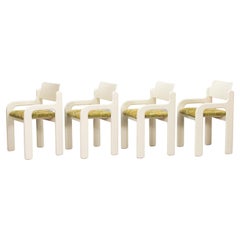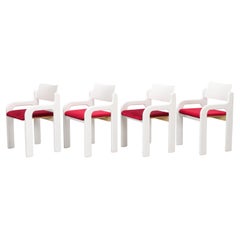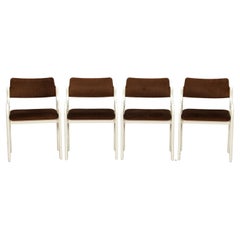Asko Flamingo
Mid-20th Century Mid-Century Modern Chairs
Wood
Mid-20th Century Finnish Mid-Century Modern Dining Room Chairs
Wood
Recent Sales
Mid-20th Century Finnish Mid-Century Modern Chairs
Velvet, Birch
People Also Browsed
Vintage 1960s Finnish Mid-Century Modern Commodes and Chests of Drawers
Oak
Vintage 1970s Italian Post-Modern Lounge Chairs
Steel
2010s Italian Modern Wall Lights and Sconces
Brass
2010s American Industrial Fireplace Tools and Chimney Pots
Steel
2010s South African Minimalist Pedestals
Hardwood
21st Century and Contemporary Dutch Mid-Century Modern Dining Room Chairs
Metal
21st Century and Contemporary Italian Mid-Century Modern Wall Lights and...
Brass, Metal
21st Century and Contemporary Italian Mid-Century Modern Chandeliers and...
Brass
21st Century and Contemporary American Bohemian Chandeliers and Pendants
Brass
Vintage 1950s Italian Mid-Century Modern Beds and Bed Frames
Wood
Vintage 1970s Danish Scandinavian Modern Dining Room Chairs
Bouclé, Birch, Plywood
Vintage 1960s Dutch Mid-Century Modern Daybeds
Teak, Upholstery
Vintage 1970s Italian Mid-Century Modern Bedroom Sets
Steel, Chrome
Vintage 1970s Italian Mid-Century Modern Sofas
Metal
Vintage 1970s Italian Post-Modern Dining Room Chairs
Leather, Ash
Mid-20th Century Italian Mid-Century Modern Desks
Leather, Wood
Eero Aarnio for sale on 1stDibs
“I always look ahead, never back,” Finnish design legend Eero Aarnio has been quoted as saying. A leading innovator of modern furniture design, Aarnio has long embraced a bold, playful, confident and colorful style several steps ahead of his time.
For his 1954 entrance test for the Institute of Industrial Arts in Helsinki, Aarnio created a whimsical painting of a man reading a newspaper in a red, curved chair whose silhouette foreshadowed Aarnio’s Ball chair of 1963. That spherical seat skyrocketed him to design fame, and decades later, it is still recognized as one of the world’s most futuristic designs.
Born in 1932 to a house painter and a seamstress, Aarnio has always had a cheerful disposition and an independent spirit. He went his own way early on: After just two years at Asko, the big Scandinavian furniture company that originally produced his Ball chair, Aarnio established his own studio in 1962.
Over the next decade, the young visionary made an indelible mark on the world. Open-minded and entrepreneurial, Aarnio embraced the aesthetics, materials and technologies of the Swinging Sixties, working with a new generation of plastics and molding them into fluid, organically shaped, brightly hued forms.
Introduced at the 1966 Cologne Furniture Fair, the pod-like fiberglass Ball chair soon adorned the homes of movie stars and royalty, graced magazine covers around the world and was featured in films and ads. The groundbreaking seat originally came in orange, white, black, yellow and red and could be ordered with a telephone installed in it. Yet this designer of the future, as he was known in the 1960s, has always insisted that he didn’t deliberately seek to be associated with the decade’s sci-fi aesthetic.
“I had no intention to create either pop or Space Age design — as many people label my work,” Aarnio declares in one of the essays included in Eero Aarnio — Designer of Colour and Joy, a book jointly created by the Design Museum and publisher WSOY to accompany 2016’s “Eero Aarnio” exhibition.
The show featured a number of Aarnio’s objects, including his iconic Ball, Pastil (1967), Bubble (1968), Tomato (1971) and Pony (1973) chairs. These were joined by lesser-known seating and other objects like the rattan Juttujakkara, or mushroom, stool (1960); the sculptural Double Bubble lamp (2000), with which Aarnio first explored the possibilities of rotation-cast plastic; and the three-legged Rocket (1995) and Baby Rocket (2006) stools, both parts of a collection produced by Artek after Tom Dixon, the company’s creative director from 2004 to 2009, discovered the original piece in Aarnio’s kitchen.
“Aarnio expanded the whole idea of what constitutes furniture,” explained Suvi Saloniemi, the Design Museum’s chief curator. “His significance as a designer is crystallized in the liberation of form that he has introduced by discovering the properties of plastic as the material of a designer. His furniture is sculpture-like and eye-catching, but the pieces are always utilitarian at the same time.”
Find an extraordinary range of vintage Eero Aarnio chairs, tables and other furniture on 1stDibs.
A Close Look at Mid-century-modern Furniture
Organically shaped, clean-lined and elegantly simple are three terms that well describe vintage mid-century modern furniture. The style, which emerged primarily in the years following World War II, is characterized by pieces that were conceived and made in an energetic, optimistic spirit by creators who believed that good design was an essential part of good living.
ORIGINS OF MID-CENTURY MODERN FURNITURE DESIGN
- Emerged during the mid-20th century
- Informed by European modernism, Bauhaus, International style, Scandinavian modernism and Frank Lloyd Wright’s architecture
- A heyday of innovation in postwar America
- Experimentation with new ideas, new materials and new forms flourished in Scandinavia, Italy, the former Czechoslovakia and elsewhere in Europe
CHARACTERISTICS OF MID-CENTURY MODERN FURNITURE DESIGN
- Simplicity, organic forms, clean lines
- A blend of neutral and bold Pop art colors
- Use of natural and man-made materials — alluring woods such as teak, rosewood and oak; steel, fiberglass and molded plywood
- Light-filled spaces with colorful upholstery
- Glass walls and an emphasis on the outdoors
- Promotion of functionality
MID-CENTURY MODERN FURNITURE DESIGNERS TO KNOW
- Charles and Ray Eames
- Eero Saarinen
- Milo Baughman
- Florence Knoll
- Harry Bertoia
- Isamu Noguchi
- George Nelson
- Danish modernists Hans Wegner and Arne Jacobsen, whose emphasis on natural materials and craftsmanship influenced American designers and vice versa
ICONIC MID-CENTURY MODERN FURNITURE DESIGNS
- Eames lounge chair
- Nelson daybed
- Florence Knoll sofa
- Egg chair
- Womb chair
- Noguchi coffee table
- Barcelona chair
VINTAGE MID-CENTURY MODERN FURNITURE ON 1STDIBS
The mid-century modern era saw leagues of postwar American architects and designers animated by new ideas and new technology. The lean, functionalist International-style architecture of Le Corbusier and Bauhaus eminences Ludwig Mies van der Rohe and Walter Gropius had been promoted in the United States during the 1930s by Philip Johnson and others. New building techniques, such as “post-and-beam” construction, allowed the International-style schemes to be realized on a small scale in open-plan houses with long walls of glass.
Materials developed for wartime use became available for domestic goods and were incorporated into mid-century modern furniture designs. Charles and Ray Eames and Eero Saarinen, who had experimented extensively with molded plywood, eagerly embraced fiberglass for pieces such as the La Chaise and the Womb chair, respectively.
Architect, writer and designer George Nelson created with his team shades for the Bubble lamp using a new translucent polymer skin and, as design director at Herman Miller, recruited the Eameses, Alexander Girard and others for projects at the legendary Michigan furniture manufacturer.
Harry Bertoia and Isamu Noguchi devised chairs and tables built of wire mesh and wire struts. Materials were repurposed too: The Danish-born designer Jens Risom created a line of chairs using surplus parachute straps for webbed seats and backrests.
The Risom lounge chair was among the first pieces of furniture commissioned and produced by celebrated manufacturer Knoll, a chief influencer in the rise of modern design in the United States, thanks to the work of Florence Knoll, the pioneering architect and designer who made the firm a leader in its field. The seating that Knoll created for office spaces — as well as pieces designed by Florence initially for commercial clients — soon became desirable for the home.
As the demand for casual, uncluttered furnishings grew, more mid-century furniture designers caught the spirit.
Classically oriented creators such as Edward Wormley, house designer for Dunbar Inc., offered such pieces as the sinuous Listen to Me chaise; the British expatriate T.H. Robsjohn-Gibbings switched gears, creating items such as the tiered, biomorphic Mesa table. There were Young Turks such as Paul McCobb, who designed holistic groups of sleek, blond wood furniture, and Milo Baughman, who espoused a West Coast aesthetic in minimalist teak dining tables and lushly upholstered chairs and sofas with angular steel frames.
Generations turn over, and mid-century modern remains arguably the most popular style going. As the collection of vintage mid-century modern chairs, dressers, coffee tables and other furniture for the living room, dining room, bedroom and elsewhere on 1stDibs demonstrates, this period saw one of the most delightful and dramatic flowerings of creativity in design history.
Finding the Right Seating for You
With entire areas of our homes reserved for “sitting rooms,” the value of quality antique and vintage seating cannot be overstated.
Fortunately, the design of side chairs, armchairs and other lounge furniture — since what were, quite literally, the early perches of our ancestors — has evolved considerably.
Among the earliest standard seating furniture were stools. Egyptian stools, for example, designed for one person with no seat back, were x-shaped and typically folded to be tucked away. These rudimentary chairs informed the design of Greek and Roman stools, all of which were a long way from Sori Yanagi's Butterfly stool or Alvar Aalto's Stool 60. In the 18th century and earlier, seats with backs and armrests were largely reserved for high nobility.
The seating of today is more inclusive but the style and placement of chairs can still make a statement. Antique desk chairs and armchairs designed in the style of Louis XV, which eventually included painted furniture and were often made of rare woods, feature prominently curved legs as well as Chinese themes and varied ornaments. Much like the thrones of fairy tales and the regency, elegant lounges crafted in the Louis XV style convey wealth and prestige. In the kitchen, the dining chair placed at the head of the table is typically reserved for the head of the household or a revered guest.
Of course, with luxurious vintage or antique furnishings, every chair can seem like the best seat in the house. Whether your preference is stretching out on a plush sofa, such as the Serpentine, designed by Vladimir Kagan, or cozying up in a vintage wingback chair, there is likely to be a comfy classic or contemporary gem for you on 1stDibs.
With respect to the latest obsessions in design, cane seating has been cropping up everywhere, from sleek armchairs to lounge chairs, while bouclé fabric, a staple of modern furniture design, can be seen in mid-century modern, Scandinavian modern and Hollywood Regency furniture styles.
Admirers of the sophisticated craftsmanship and dark woods frequently associated with mid-century modern seating can find timeless furnishings in our expansive collection of lounge chairs, dining chairs and other items — whether they’re vintage editions or alluring official reproductions of iconic designs from the likes of Hans Wegner or from Charles and Ray Eames. Shop our inventory of Egg chairs, designed in 1958 by Arne Jacobsen, the Florence Knoll lounge chair and more.
No matter your style, the collection of unique chairs, sofas and other seating on 1stDibs is surely worthy of a standing ovation.


